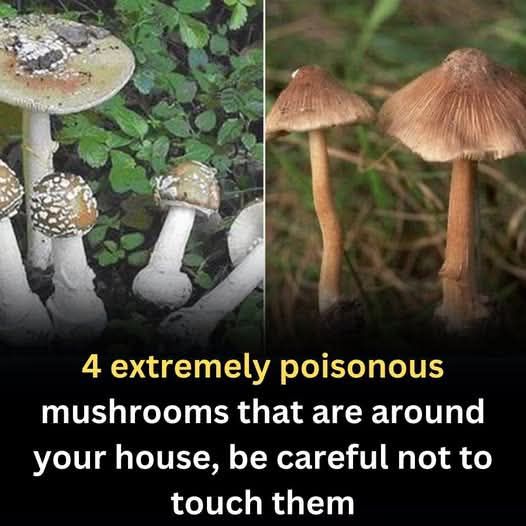ADVERTISEMENT
Stem: Slender, white with a bulbous base, and a thin veil that often disappears as the mushroom matures.
Why It’s Dangerous: Conocybe filaris is another highly toxic mushroom that contains amatoxins, the same deadly toxins found in the Death Cap. It’s often mistaken for edible mushrooms, especially the edible parasol mushrooms, due to its similar appearance. This mushroom can cause severe liver and kidney damage, leading to death within 3 to 5 days after ingestion.
Despite its appearance, this mushroom is often found in areas where lawn grass or soil is disturbed, making it a potential hazard for those who enjoy outdoor activities like picnics or gardening.
How to Stay Safe Around Poisonous Mushrooms
Here are a few tips to help you stay safe if you encounter mushrooms around your house or garden:
- Do Not Touch or Eat Wild Mushrooms: The most important rule is to avoid touching or eating wild mushrooms unless you are absolutely sure of their identity. Many poisonous mushrooms look similar to edible varieties.
- Consult a Mycologist: If you want to forage for mushrooms, it’s best to consult an expert, such as a mycologist (a scientist who specializes in fungi). They can help identify safe mushrooms and distinguish them from poisonous ones.
- Educate Yourself and Your Family: Learn about common toxic mushrooms in your area, and share this knowledge with your family, especially young children who might be curious about picking mushrooms.
- Remove Mushrooms Safely: If you find poisonous mushrooms around your house, it’s a good idea to remove them carefully. Wear gloves and avoid touching them with bare hands. You can use a spade or gardening tool to remove them and dispose of them properly, ensuring they don’t come into contact with pets or children.
Final Thoughts
While mushrooms are a beautiful and intriguing part of nature, they can also be incredibly dangerous. The four mushrooms listed here — the Death Cap, Fly Agaric, Deadly Galerina, and False Death Cap — are among the most poisonous fungi that may be found growing near your home. Recognizing these mushrooms and knowing how to safely avoid them is critical in protecting yourself, your loved ones, and pets from poisoning. Always exercise caution and seek expert advice before foraging for wild mushrooms. If you suspect someone has ingested a poisonous mushroom, seek medical help immediately.
Stay safe and be cautious when exploring the natural world!
